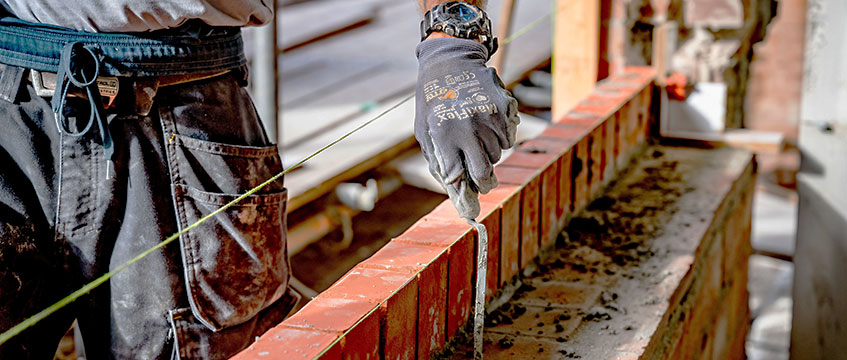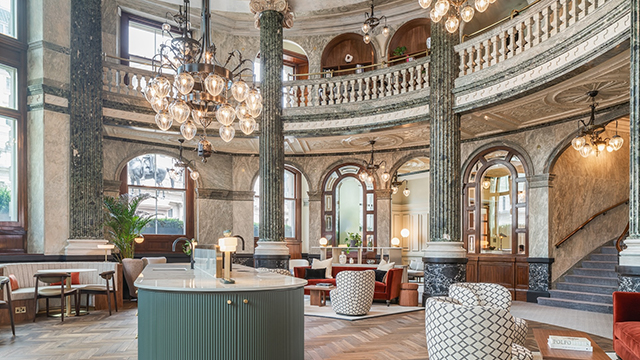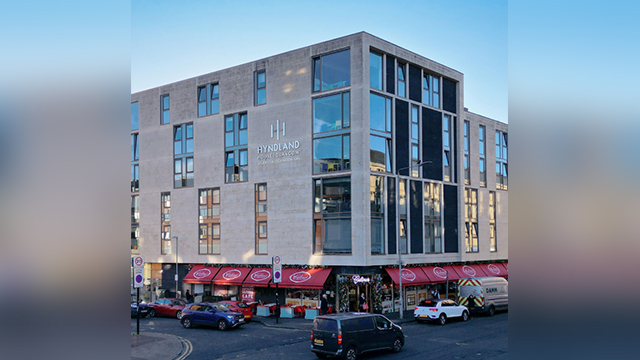Leeds City Business Park, being developed by British Gas Properties, and designed by Peter Foggo Associates, is one of the first major, low-energy, speculative commercial property schemes in the country.
It will offer 185,000 sq ft gross in three separate buildings. Clearance of the 8.5-acre site is in progress and a start on the first building of 65,000 sq ft in three floors is expected before the end of this year. The agent is Grenville Smith & Duncan.
Ventilation will be drawn in at roof level, filtered and delivered to the raised floors in the office space. As the air rises, it picks up heat and contaminants and leaves the building via exhaust grilles in the atrium perimeter glazing.
The cladding is in glass, but fixed silver-anodised aluminium sunscreens will act as sun shades.
Provision is also made for local or complete mechanical air-conditioning. Fan-coil units could be fitted to the void underneath the floors, and there is space for chillers on the roof and for pumps in the plant room. Mechanical air-conditioning could be provided for the whole building, or for selected areas, such as meeting rooms or computer rooms.
Energy consumption and costs are predicted to be 30% of a standard air-conditioned building. And the scheme has been awarded an “excellent” rating under the BREEAM environmental awards by the Building Research Establishment.
One of the first projects in the country to utilise the chilled-beam, displacement-ventilation system is the new headquarters for Avon and Somerset Police at Portishead Down, near Bristol.
The scheme is being designed by a partnership between architect Bruges Tozer and consulting engineer Hoare Lea & Partners. Air is introduced at floor level, gathers heat and contaminants as it rises and is removed at ceiling level. The chilled ceiling beams prevent stale air from re-entering.
All windows can be opened, and the need for cooling is controlled by the use of external sun shades. When cooling is required, electricity consumption is minimised by cooling the water to the chilled beams to 14°C rather than the 5°C used for conventional forms of air-conditioning.
Due for completion in spring 1996, tendered costs for the project are £740 per m2, and the cost of mechanical and electrical services is £240 per m2.
One of Britain’s few office buildings to employ a similar system is the Home Owners Friendly Society’s building in Harrogate, designed by Smith Smalley and HLP.
Joanna Embling, of Healey & Baker’s City office, says that facilities managers are receptive to the idea of low-energy offices mainly on the grounds of cost and ease of maintenance. She reports that London & Manchester has opted for a chilled ceiling for the island site at Finsbury Pavement. The office element will extend to 125,000 sq ft, with a Marks & Spencer at street level.
Embling is also advising Tesco on its refurbishment option for 80 Cheapside, and a chilled ceiling is under discussion. She says that the interest has been generated not so much on cost grounds but because of the coming Building Regulations and EC directives which will outlaw CFCs used in conventional air-conditioning systems.










